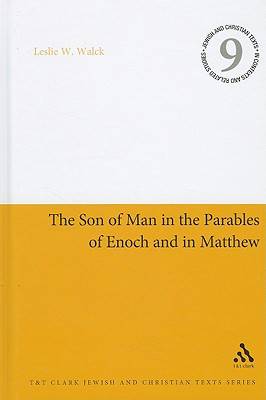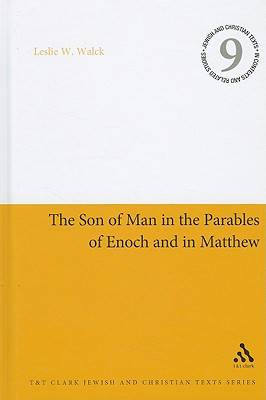
- Afhalen na 1 uur in een winkel met voorraad
- Gratis thuislevering in België vanaf € 30
- Ruim aanbod met 7 miljoen producten
- Afhalen na 1 uur in een winkel met voorraad
- Gratis thuislevering in België vanaf € 30
- Ruim aanbod met 7 miljoen producten
Zoeken
The Son of Man in the Parables of Enoch and in Matthew
Leslie W Walck
€ 339,45
+ 678 punten
Uitvoering
Omschrijving
This book examines all the relevant passages containing the Term "Son of Man" in both Matthew and the Parables of Enoch. Depictions of the Son of Man in the Gospel of Matthew and in the Parables of Enoch ( Par. En.) raise questions about their relationship. The meaning and origin of the term "Son of Man" are discussed, as well as the possible influence of Par. En. on Matthew. Literary, Redaction, Sociological and Narrative criticisms are employed. Introductory questions of date, provenance and social setting are addressed for both Matthew and Par. En. Dates as early as the early second century bce and as late as the late third century ce have been proposed for Par. En., but a consensus seems to be growing for the late first century bce. Therefore Matthew could have known Par. En. Sociological methodologies reveal that the author and audience of Par. En. may have been members of an ousted ruling elite, opposed to the current administration, and yearning for a just reversal of fortunes.Sets of characteristics of the Son of Man in Par. En. and Matthew are developed, and the term is examined briefly in the other Gospels. Then the two sets of characteristics are carefully compared. Similarities in vocabulary as well as in the pattern of relationships prove to be intriguing, showing that Matthew and Par. En., in contrast to other writings, share a unique conception of the judgment scene focussed on the Son of Man as eschatological judge. This suggests quite strongly the shaping of Matthew's concept in the direction of Par. En.
Specificaties
Betrokkenen
- Auteur(s):
- Uitgeverij:
Inhoud
- Aantal bladzijden:
- 288
- Taal:
- Engels
- Reeks:
- Reeksnummer:
- nr. 22
Eigenschappen
- Productcode (EAN):
- 9780567027290
- Verschijningsdatum:
- 14/04/2011
- Uitvoering:
- Hardcover
- Formaat:
- Genaaid
- Afmetingen:
- 152 mm x 226 mm
- Gewicht:
- 498 g

Alleen bij Standaard Boekhandel
+ 678 punten op je klantenkaart van Standaard Boekhandel
Beoordelingen
We publiceren alleen reviews die voldoen aan de voorwaarden voor reviews. Bekijk onze voorwaarden voor reviews.











